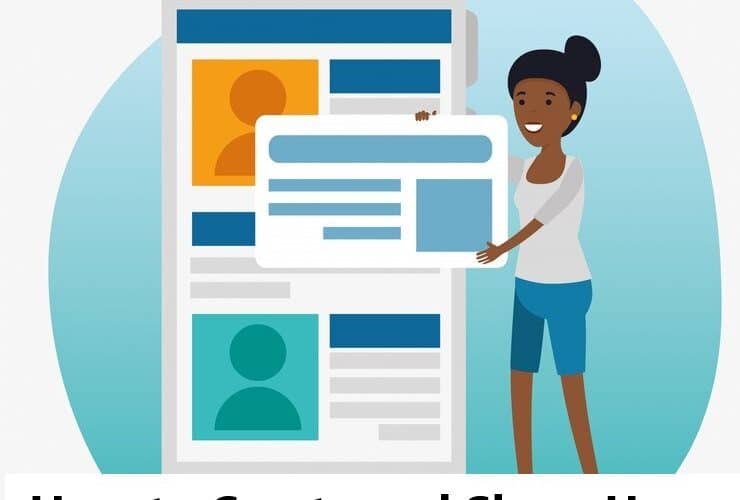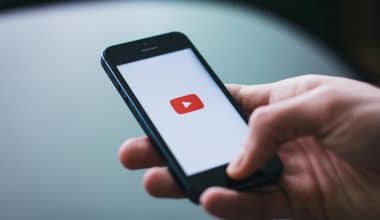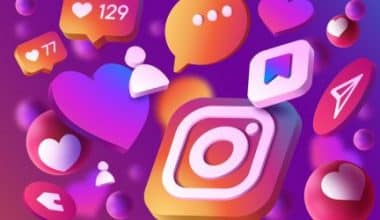In the modern business world, user-generated content (UGC) plays a leading role in the way that brands and companies interact with customers. This is because it values the real voices of users and customers and can appear in a range of media, including blog entries, videos, product pages, social media posts, and online reviews.
By encouraging customers to share their experiences, reviews, and creative expressions, brands can leverage their audience’s creativity and build stronger relationships with consumers.
So how can you seize this chance to promote your brand and goods on social media by gathering, curating, and sharing user-generated content? In this post, I will show you how to create UGCs and how to use them in your marketing efforts to captivate the public, increase brand awareness, and foster meaningful customer relationships.
Key Points:
- Use branded hashtags, call-to-actions (CTAs), and contests to motivate customers to share content related to your brand.
- Gather UGC from various sources like social media posts, reviews, videos, and photos to promote authenticity and engagement.
- Share UGC on social media, websites, emails, and offline displays to increase reach and build trust.
- Always ask for permission and give credit to the original creators to foster community and strengthen customer relationships.
- Use UGC which represents diverse and genuine customer experiences, to enhance your brand’s authenticity and inclusivity.
What is UGC (User-Generated Content)?
UGC refers to any content that users or customers of a specific platform, website, or brand create and share on social media. They can consist of text, photos, videos, and other types of media.
In recent years, user-generated content (UGC) has gained popularity, especially on social media sites like Facebook, X, and TikTok. It’s simple for users to produce and share original content on these networks.
Therefore, with UGC, companies and brands can tap into the creativity of their customers to create a sense of community and engagement around their business by encouraging them to develop and share their own content.
Types of User-Generated Content
User-generated content (UGC) can be anything from pictures and videos posted on social media to reviews and comments left by users. They all have their benefits. Here we will examine the types of user-generated material that you can share on social media:
#1. Social Media Content
Any user-generated content (UGC) on social media that promotes your brand is, put simply, brand content. It should come as no surprise that social media content matters, as people are influenced by content that is uploaded by real users or by someone they know.
On social media like YouTube, Facebook, Instagram, and Twitter, people share details about brands that they use as well as their experiences with them. These posts eventually turn into user-generated content (UGC), which marketers can deliberately exploit to attract a sizable consumer base.
#2. Customer Reviews and Testimonials
Customer ratings and reviews are the other widely used category of user-generated content. Online reviews serve as word-of-mouth for businesses. Even before they enter the store, they assist others in learning about the brand.
These reviews on platforms like Google, Facebook, Yelp, and Trustpilot are honest declarations made by consumers endorsing the legitimacy of the brands. It’s the ideal method for showcasing excellent client experiences. Customers can share their thoughts and opinions on your brand and merchandise with other customers by using the review system. Additionally, it can show brands where they can make improvements.
Check out our Customer Feedback Analysis Template:
#3. Video Content
The main sources of user-generated content (UGC) for videos are YouTube videos. With over 3 billion active users monthly, this is the best place to create user-generated content due to its popularity.
For example, unboxing videos can tell you everything there is to know about a product and show you all the inner products and how well they function. These kinds of videos are sufficient to arouse a customer’s desire.
Similar to this, Instagram videos mostly consist of short videos that actual customers create and share while tagging the brand. To reach a wider audience and create legitimate promotions, brands might reshare the stories as user-generated content (UGC).
#4. Blog Post
Imagine certain bloggers using posts and videos to promote your business on social media. For example, with the use of ‘how to use’ guides and videos, this content helps your brand become recognized among huge audiences and serves as user-generated content (UGC).
#5. Hashtag Campaigns
Simply put, hashtag campaigns are promotional events where brands leverage audience-posted material with a designated hashtag to highlight their products and dependability. To increase audience involvement, brands use hashtag campaigns to showcase user-generated content during an event or enhance its success.
For example, Coca-Cola’s #ShareACoke campaign is among the most well-known hashtag campaigns we have seen.
#6. Content Gathered through Surveys
Surveys are used to gather customers’ opinions on a product or service to create a functional strategy.
By using the data gathered from the surveys, brands may better understand their users, meet client needs, and improve the perception and value of their brands.
Additionally, to attract and engage more customers, organizations can employ surveys like user-generated content (UGC) to present content on their websites as graphs, infographics, and statistics.
#7. Zero-Party Data
Zero-party data is data that clients voluntarily and consciously provide to a company. Consider it as a dialogue in which the client chooses to provide details about their requirements, preferences, and goals.
Note that through surveys, quizzes, wish lists, loyalty programs, or any other opt-in method, customers voluntarily choose to share this data.
#8. User-Generated Photos
Photos are another common type of user-generated content (UGC). Through using user-generated content (UGC) images or photos, brands showcase their goods in authentic settings, giving consumers a concrete idea of their usefulness. UGC images also help to establish a personal rapport with clients by expressing gratitude for their suggestions and comments.
How to Curate User-Generated Content on Social Media
Utilizing user-generated content (UGC) on social media platforms is beneficial for marketers as it fosters audience creativity and passion while increasing brand recognition and interaction. Here we will look at several ways to curate UGCs:
#1. Use A Branded Hashtag
Encourage social media users who are sharing content about your brand to utilize a specific hashtag. This facilitates your search for and collection of UGC. It also helps to build a sense of community among your fans.
Use this hashtag to promote your branding and provide a call to action (CTA) on your website, tags, packaging, and wherever else you have room.
#2. Provide CTAs (Call to Actions).
People might require a little encouragement to create. Why not ask for suggestions for UGC from customers?
For instance, mobile phone companies encourage users to snap pictures using the camera of their latest phones. These customers have shared user guides and unboxing videos on social media, which these brands use to highlight their products in use.
Note that you can make use of a review platform that enables users to comment with images and videos.
#3. Host A Ugc Contest
You can organize a competition where participants can enter to earn prizes by submitting their own work. This gives you a wealth of stuff to share in addition to increasing engagement.
Brands like Lego host giveaways on their websites and social media to generate buzz and user-generated content. These tasks encourage users to participate in the community and engage in healthy competition.
#4. Make Use Of Ugc Platforms
UGC platforms enable users to produce, distribute, and connect with brands looking for user-generated content. UGC platforms can be found on a variety of websites, apps, and social media networks.
Take a look at these UGC channels and platforms:
- Tagshop
- Tagbox
- Trend
- Tint
- Pixlee
- Stackla By Nosto
- Billo
- Bazaarvoice
- Yotpo
- Social Native
- JoinBrands
- Traditional social media: Some of the most well-known UGC platforms are social media sites like Facebook, Instagram, TikTok, X, Pinterest, and Reddit.
- YouTube
#5. Partner With Influencers
Working with influencers can provide you with new user-generated content because they are excellent at producing original content that speaks to them and their audience.
Furthermore, these influencers can help you conduct a contest on their accounts, which is an additional option.
How Do I Share User-Generated Content?
After you have curated the UGC, consider how to share it in your own marketing campaigns. Here are some suggestions:
#1. Interact With User-Generated Content on Social Media.
Interacting with UGCs is the easiest approach to promoting your brand on social media. Therefore, you should like, share, comment on, and repost user-generated content that is associated with your brand. Remember to provide credit and acknowledge the creator in order to increase awareness as well as give them credit. This lets your viewers know that you appreciate their donations and extends a thank you to your customers.
#2. Repurpose User-Generated Content on your social media page:
You can creatively convert UGC into many kinds of content. Convert customer’s photographs into visually appealing visuals, and aggregate user videos into captivating stories. Countless options will keep your material varied and interesting.
For example, see how the EPL makes use of UGC to welcome into a new season:
#3. Use user-generated content in social media advertisements.
Your advertisements will perform much better if they contain real user material since it makes them seem more relatable and reliable. It’s also an affordable method of producing engaging advertising content.
#4. Display user-generated content on other platforms.
Go beyond what social media can offer. Display user-generated content (UGC) on your website, via email newsletters, or even in your physical storefronts.
You may increase conversion rates by fostering trust with potential customers by showcasing this material on different platforms. It benefits both parties!
#5. Request for permission
It’s always a good idea to get permission before sharing someone else’s work. To make sure that your customers feel valued and respected, a little direct message or comment requesting their permission might make all the difference.
Why is User-Generated Content Important?
#1. It Offers Authenticity
User-generated content (UGC) is the most genuine content kind available. Research shows that 86% of consumers are more likely to trust a brand that distributes user-generated content. Therefore, you should consider user-generated content (UGC) since the majority of consumers value recommendations over direct marketing.
However, resist the urge to falsify your user-generated content, as this harms the reputation of your brand.
#2. It Improves Brand Loyalty
People enjoy being a part of something greater than themselves, and they may join a brand’s community by contributing user-generated content (UGC). That will greatly increase consumer affinity and brand loyalty.
Additionally, user-generated content (UGC) allows brands to connect with their customer base, thereby strengthening and expanding the bonds between audiences and businesses.
#3. Social Proof
Social proof is the psychological idea that people make decisions based on the influence of others, which forces them to behave under social norms or expectations.
UGC is the ideal illustration of this. This means that prospective buyers are psychologically more inclined to test your goods if they witness satisfied current users.
#4. It Makes It Easy To Content Curation
With UGC, brands, and companies have enough content to encourage a potential customer to make a purchase. Therefore, brands do not have to come up with content for future marketing endeavors.
#5. It Is Cost-Effective.
UGC is an affordable means of expanding your brand and adding variety to your material. Furthermore, there’s no need to spend money on pricey advertising companies or eye-catching campaigns.
With UGC, you may establish a connection with the most significant individuals in your company: your audience. The majority will be thrilled to be highlighted on your channel.
UGC is frequently significantly less expensive and simpler to handle for smaller firms or those who are just getting started than investing in larger-scale brand awareness efforts.
20 User-Generated Content Examples by Top Brands
Here I will show you well-known brands that have made use of user-generated content to inspire you:
#1. Carters
Here, Carter’s Instagram account is reposting a customer’s post with a Thanksgiving theme. This is a clever method to give your clients a sense of importance.
#2. Kendra Scott
Iconic jewelry brand Kendra Scott uses Instagram to post user-generated content from their stores to increase curiosity about going in person as opposed to just online.
#3. Drunk Elephant
Here, Drunk Elephant offers a UGC photo and a ton of helpful product advice.
#4. Teachable
Teachable, a well-liked platform for course developers, has revealed the landing page of one of their clients’ courses here.
#5. Happy Skin
The popular product and a special bundle are being promoted by Happy Skin, a skincare brand, through user-generated content.
#6. Toms
Well-known shoe company Toms frequently reposts user-generated content. It’s a simple approach to meeting your brand’s content needs while developing a closer relationship with fans.
#7. Bonobos
On its Instagram feed, the clothing brand Bonobos features stylish masks worn by customers, giving them credit for the content. In addition to providing proper credit, this allows Instagram users to increase their fan base, which encourages other influencers to share user-generated content with the company.
#8. Apple
Apple wanted the world to know when they unveiled their newest lineup of iPhones, which included their highest-resolution cameras to date. Hence, they encouraged their fan base to participate in the #ShotOniPhone social media challenge.
Millions of people participated in the campaign, and the iPhone even used some of the best in their advertisements and marketing materials. Instead of just stating the features of the iPhone, the campaign used user-generated content (UGC) to demonstrate how easy it was to use and how versatile the camera could take pictures. This was a significantly more effective approach.

What Are The Best Practices For A Successful UGC Program?
Consider the following best practices as you develop your UGC strategy:
#1. Always Ask For Permission.
By doing this, you shield your business from future legal action related to inappropriate DRM management. Obtaining permission also makes it possible to engage with customers one-on-one, strengthening ties within the community and fostering brand loyalty.
#2. Provide Chances for Reciprocal Interaction.
Always ask your audience to submit content when you share user-generated content. For instance, a social media post containing user-generated content urges the audience to submit their content. Something as straightforward as “Do you want to appear on our next post? All you need to do is click like and share your pictures!”
#3. Be Authentic
Authenticity is the most valuable feature of user-generated material. Therefore, it’s a good idea to choose content that feels more authentic and relatable if you find yourself sifting through hundreds of submissions to share or spotlight.
Real, unfiltered user-generated content connects with your audience more deeply and presents your company in a more approachable way.
#4. Credit the Creators
Make sure to give credit to the original producers of user-generated content (UGC) whenever you share or reuse it on your website or social media accounts.
In addition to expressing gratitude and admiration, tagging someone in an article or caption makes the information available to their followers and might even entice them to interact with your brand.
#5. Maintain Legal Compliance
Laws about copyright and privacy still apply even to content that was not first produced by your company. Make sure you have permission to use their likeness and that there are no copyrighted music or brand features before using any user-generated images or videos for marketing.
By doing this, you may avoid any future legal problems as well as the inconvenience and possibly unpleasant circumstance of having to remove anything that has been put on your website or social media after it has been posted.
#6. Promote Positive Content
You may enhance the diversity of your content, attract a larger audience, and project a positive image of your brand by promoting content that embraces inclusivity, optimism, and diversity.
This will eventually create a devoted following for your brand—a community in which everyone is valued, included, and represented.
#7. Use UGCs on Multiple Channels
You should use user-generated content (UGC) in all forms across a variety of marketing platforms, including social media, email newsletters, websites, offline advertising, and any other channel through which your target audience may find you.
With this cross-channel strategy, your brand and products will be seen by more people and have the potential to gain more followers, increasing the content’s impact and reach for a more successful user-generated content campaign!
How Brand Uses UGC in Marketing?
Typically, brands choose to integrate social media or review feeds into their websites. Brands employ user-generated content (UGC) in their blogs, social media ads, digital signage, in-store displays, social walls, and other channels in addition to their websites and email campaigns.
How Can UGC Help Marketers?
In addition to helping marketers increase visibility and brand awareness, user-generated content (UGC) also contributes to conversion rates, trust-building, and—most importantly—customer retention and sales.
How Does UGC Marketing Help To Enhance Brand Value?
UGC enhances brand values by creating a feeling of community and connection with a company. Additionally, it gives a business a feeling of authenticity, which can aid in gaining the confidence and trust of consumers.
How Does UGC Marketing Help A Brand To Generate More Leads?
By capitalizing on customers’ confidence and trustworthiness in other consumers’ opinions, user-generated content (UGC) marketing can assist a company in generating more leads.
How to Encourage Your Audience to Create UGC
There are various strategies for getting customers and audiences to provide UGC:
- Competitions and giveaways
- Post UGC frequently to let fans know you’re willing to share their work.
- Use a branded hashtag, such as #itsfromdover from Dover Saddlery.
Related Articles:
8 Content Marketing Trends to Boost Your Business in 2024
A Simple Guide to Using Facebook Stories to Promote Your Business
Successful Partnership Examples: Lessons from Top Collaborations
What Is a UGC Content Creator? A Guide to Becoming One in 2024






